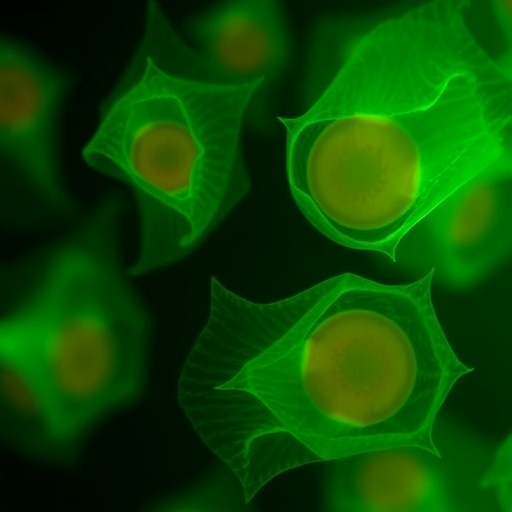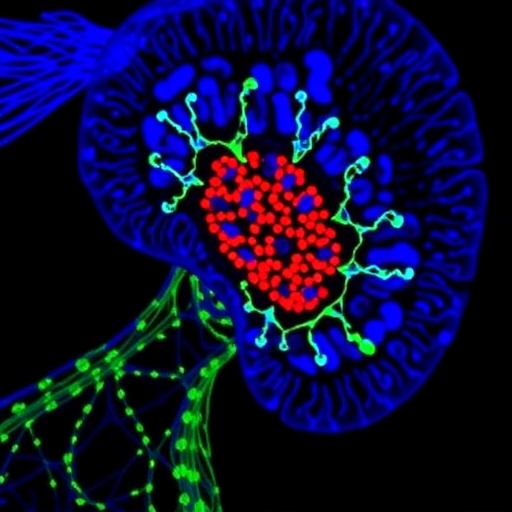PROTECT YOUR DNA WITH QUANTUM TECHNOLOGY
Orgo-Life the new way to the future Advertising by AdpathwayIn a groundbreaking study led by Wang Z., Zhang S., and Li S. et al., researchers have unveiled the intricate mechanisms by which CAP (a phytochemical compound) regulates the “cold–heat” balance in osteosarcoma model mice. This significant advancement in cancer research integrates various scientific fields, including metabolomics, transcriptomics, and network pharmacology, to provide new insights into the complexities of osteosarcoma, a malignant bone tumor that primarily affects children and young adults.
Osteosarcoma presents a formidable challenge in oncology due to its aggressive nature and high propensity for metastasis. Current treatment modalities often yield limited efficacy and may result in severe side effects. The need for innovative therapeutic strategies is dire, and this study offers a promising avenue. By delving into the biological underpinnings of “cold–heat” balance—a concept rooted in traditional Chinese medicine—researchers emphasize the potential of a holistic approach in managing this malignancy.
CAP, known for its anti-cancer properties, has been observed to influence a multitude of cellular processes. In the quest to elucidate its role in osteosarcoma, the research team employed metabolomics to identify metabolic changes provoked by CAP treatment. Metabolomics allowed for the comprehensive analysis of small molecule metabolites within the biological samples derived from the osteosarcoma model mice. The findings suggested that CAP shifts the metabolic profile, promoting apoptosis (programmed cell death) of cancer cells while simultaneously bolstering the energy metabolism of healthy cells.
Furthermore, the transcriptomics aspect of the study provided a deeper understanding of how CAP modulates gene expression related to osteosarcoma. Employing next-generation sequencing techniques, the researchers profiled the RNA transcripts in treated versus untreated mice. The results illuminated significant alterations in gene expression patterns, with CAP treatment downregulating pro-tumorigenic pathways while upregulating tumor-suppressive mechanisms. This dual action is pivotal as it suggests a potential for CAP to not only inhibit tumor growth but also to induce favorable changes in the cellular environment.
The network pharmacology component added another layer of complexity to the research by investigating the interactions between CAP and various biological pathways. Utilizing advanced computational biology tools, the researchers mapped out the intricate network of molecular interactions influenced by CAP. This systems biology approach revealed critical therapeutic targets, thereby facilitating the design of more effective treatment strategies that can synergistically exploit these targets.
As the study progressed, the team validated their findings through a series of rigorous experiments to assess the effects of CAP on osteosarcoma progression in vivo. The osteosarcoma model mice treated with CAP showed a marked reduction in tumor size compared to control groups, underscoring the potential of CAP as an efficacious treatment strategy. The study also raised important discussions regarding the timeline of treatment, dosage variance, and long-term implications of CAP therapy on overall patient health.
Moreover, the comprehensive nature of this study emphasized the necessity for interdisciplinary collaboration in cancer research. The integration of metabolomics, transcriptomics, and network pharmacology exemplifies how multi-faceted approaches can lead to a deeper understanding of disease mechanisms and therapeutic interventions. This paradigm shift is critical in breaking down silos within scientific disciplines, fostering innovation, and ultimately, improving patient outcomes.
Looking forward, the implications of these findings extend far beyond osteosarcoma treatment. They highlight the significance of individual metabolic and genetic profiles, supporting the evolution toward personalized medicine. By tailoring treatments based on the specific molecular characteristics of each patient’s tumor, oncologists may significantly enhance efficacy while minimizing adverse effects.
Importantly, this research also opens avenues for further exploration of other traditional pharmaceuticals and their modern applications in oncology. CAP’s mechanism of action in preserving the cold–heat balance may provide insights applicable to a broader range of malignancies, prompting investigations into similar compounds and their therapeutic potentials.
In conclusion, the work of Wang and colleagues marks a pivotal advancement in our understanding of osteosarcoma and the role of CAP in possibly transforming its treatment landscape. With promising results from their integrative study of metabolomics, transcriptomics, and network pharmacology, the future of osteosarcoma therapy looks considerably brighter. Ongoing research will not only validate these findings but also illuminate pathways for developing innovative, effective cancer therapies that harness the wisdom of both traditional and modern medicine.
The remarkable journey from laboratory findings to possible clinical applications reminds us of the commitment and collaborative spirit required in the quest to conquer cancer in all its forms. This study is a testament to the tireless efforts of researchers worldwide who dedicate themselves to the relentless pursuit of knowledge to eliminate the burden of cancer from society.
Subject of Research: Mechanism of CAP in regulating the “cold–heat” balance in osteosarcoma model mice.
Article Title: Mechanism by which CAP regulates the “cold–heat” balance in osteosarcoma model mice: an integrative study of metabolomics, transcriptomics, and network pharmacology.
Article References: Wang, Z., Zhang, S., Li, S. et al. Mechanism by which CAP regulates the “cold–heat” balance in osteosarcoma model mice: an integrative study of metabolomics, transcriptomics, and network pharmacology. J Transl Med 23, 1177 (2025). https://doi.org/10.1186/s12967-025-07238-z
Image Credits: AI Generated
DOI: 10.1186/s12967-025-07238-z
Keywords: osteosarcoma, CAP, metabolomics, transcriptomics, network pharmacology, cancer therapy, traditional medicine, personalized medicine.
Tags: anti-cancer properties of CAPCAP role in osteosarcomachallenges in osteosarcoma treatmentcold-heat balance in osteosarcomaholistic approaches in cancer managementinnovative strategies for malignant tumorsmetabolomics in cancer researchnetwork pharmacology in osteosarcomapediatric bone tumors researchphytochemical compounds in oncologytemperature regulation in cancertranscriptomics and cancer therapy


 4 hours ago
14
4 hours ago
14





















 English (US) ·
English (US) ·  French (CA) ·
French (CA) ·